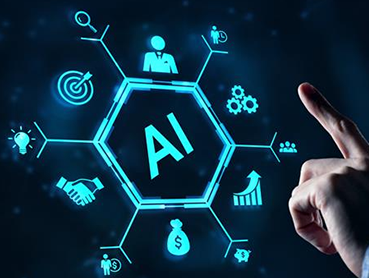Top Talent Acquisition Mistakes to Avoid in 2024

The current state of the job market has become increasingly volatile. Massive layoffs, increasing inflation rates, and a looming recession have impacted the job market directly. With the global economy toeing the stagflation line, hiring rates have also dropped significantly.
However, as history repeats itself once the dust settles – the competition for top talent will surge again so let’s not repeat any mistakes from 2023.
Key Takeaways from Previous Talent Acquisition Mistakes
If we learned anything from the Great Resignation, it is that people simply will not stay at a job they do not feel valued at. This is why efficient talent attraction and retention are critical for companies during this time.
To keep up with the changing tides, here are 5 recruitment mistakes to avoid in 2024:
Restricting your talent pool by only focusing on traditional candidates
While education and experience prepare individuals for a role, those qualifications do not take into account their skills, productivity, and efficiency. Having a specific kind of education and experience does not guarantee there will be a match in skills. You could be overlooking and missing out on quality candidates with your talent search limitations.
Hiring talent with the right skills and values can help the company save time, money and resources spent when training new hires. This is why it is important to consider candidates skills which can translate into their ability to quickly adapt. Candidates that are a good fit for a role based on their previous roles, industry experience, and company culture are important factors that help new hires adapt quickly. Making sure a candidate’s expectations are the same for the role they are hired for will help increase employee satisfaction and retention.
Outdated or Limited Tech Stack
Sourcing quality candidates can be tedious, and filtering through them can be even more exhausting – especially when it comes to high volume hiring. Implementing AI solutions can help automate repetitive tasks and increase efficiency to improve time to fill.
There are numerous ways you can leverage AI tools to automate some of your recruitment tasks. Let’s discuss a few of the most popular solutions you can utilize in your talent acquisition processes:
- ChatGPT or Bard to create outlines or first drafts of job descriptions and then tweak them with more details that are relevant to your organization.
- AI design tools like Canva to create social media and email image to advertise your posts.
- Arya’s AI recruiting and engagement platform to streamline candidate sourcing, screening, and engagement or for high volume hiring, Applicants on Demand which sends qualified applicants straight to your ATS – both AI solution helps improve candidate quality and recruiter efficiency.
Aligning Short Term and Long Term Goals
While hiring sprees are usually fuelled by an urgent need, talent matches made with solely short-term goals in mind do not always have high success rates. While a candidate may have the skills to meet immediate needs, their adaptability for meeting long term goals may be lacking – fast, but not quality hires can increase the risk of inefficiency, a high learning curve, more training due to skills gap, and increased employee turnover rate. This recruitment mistake can easily rack up the bill with training and onboarding costs.
Determining if a candidate suits a company’s long-term goals goes beyond just background evaluation and skill assessment. To avoid this common recruiting mistake, hiring managers must pay attention to soft skills, cultural fit and individual career goals to determine if the candidate is a proper fit for the job. By incorporating these elements in the hiring process, companies can take measures to nurture talent growth within their organizations right from the start.
Lack of Diversity
Investing in quality talent is essential for any corporation to grow. By not exploring a variety of recruitment channels puts limitations on diversity and innovation. The workforce can become stagnant and unable to adapt to changing times. And without a diverse workforce, companies have less luck in attracting talent, especially from underrepresented backgrounds.
Not deploying diverse hiring strategies can become an expensive recruiting mistake in the long run. From lacking cultural sensitivity to having a tarnished reputation for hiring bias – a homogenous workforce shows resistance to change and can limit an organization’s ability for adaptability and growth.
Exploring diverse recruitment channels will contribute to a wider talent pool, while nourishing a work environment destined for growth. From brand image to employee engagement, these factors contribute significantly to how a company performs in the long run.
Disconnect in Job Placements
When job placements fail to align with a candidate’s skills and interests, it can affect the company negatively. This recruiting mistake wastes valuable resources by resulting in skill underutilization, low productivity and contribute to overall inefficiency. It can also disrupt employee engagement and affect the company’s work culture. This can result in low job satisfaction and increase risk of turnover.
Tailored job placements level out the playing field by prioritising skill-based expertise. This boosts productivity by prioritizing employee engagement, ensuring that the employees have opportunities for career growth while contributing to the company.
Will You Be Making These Talent Acquisition Mistakes in 2024?
We surely hope not! Talent attraction and retention will be critical in the upcoming year as the future state of the economy continues to experience highs and lows. Recruiters and talent acquisition teams must work closely with hiring managers to create attractive job descriptions, find high quality candidates, and ensure it is a best-fit for both parties to successfully fill roles with talent that is most likely to succeed.





